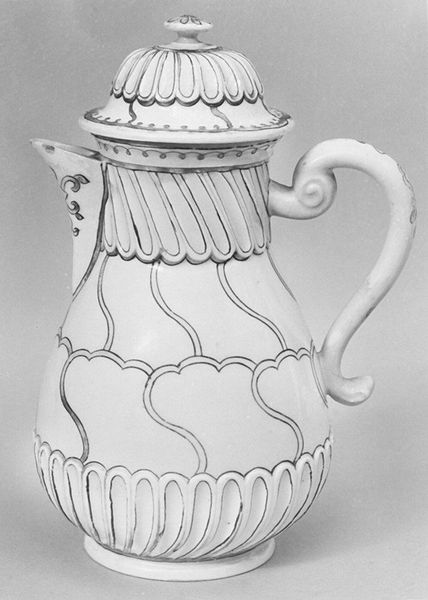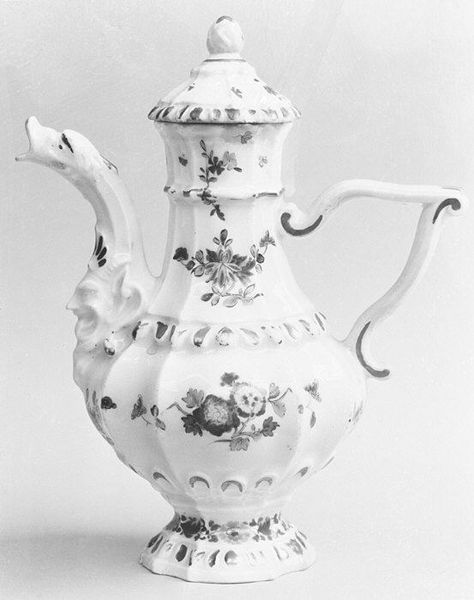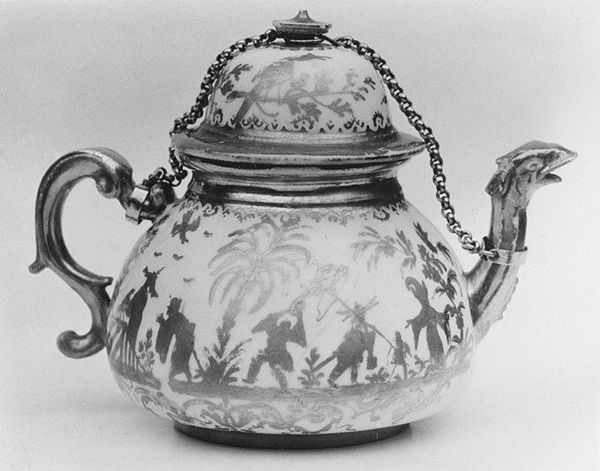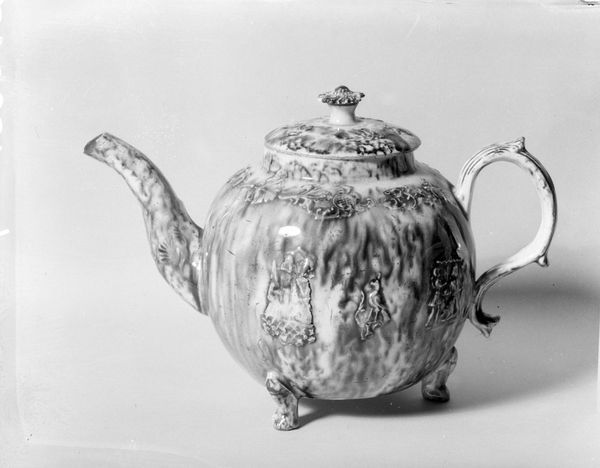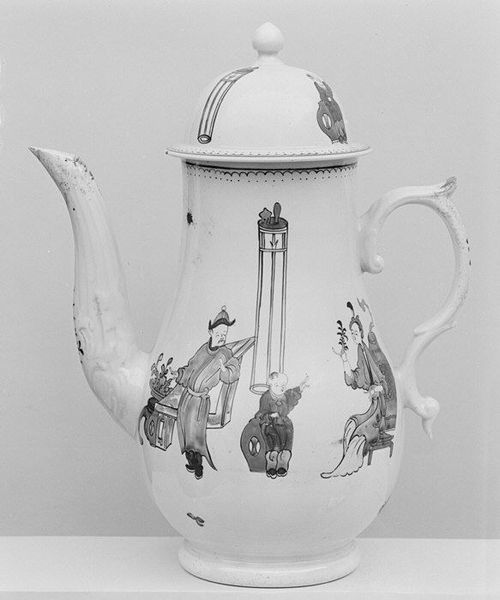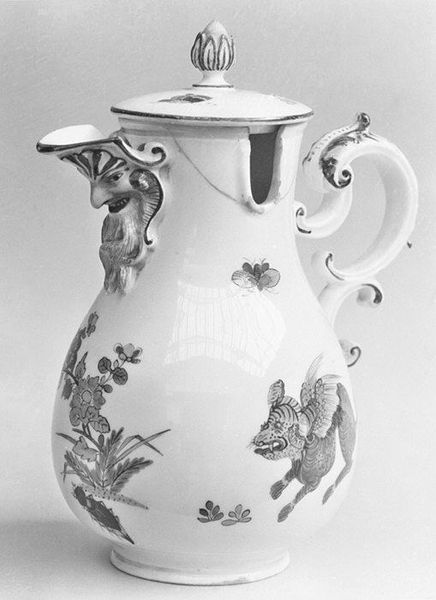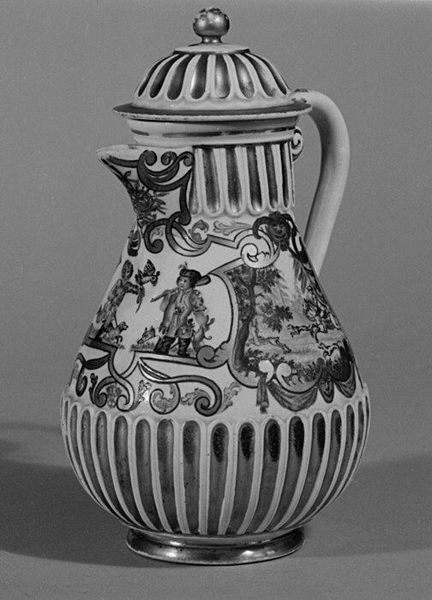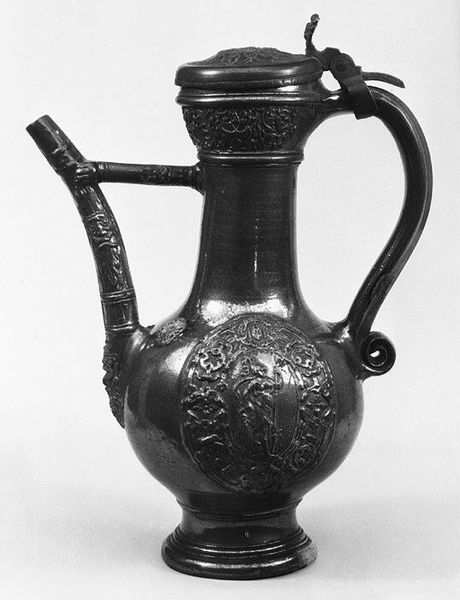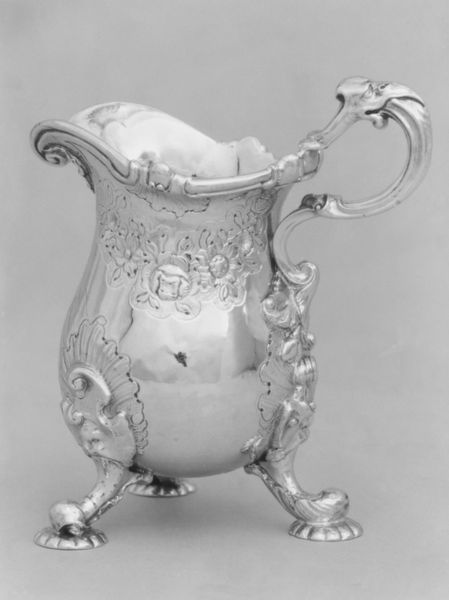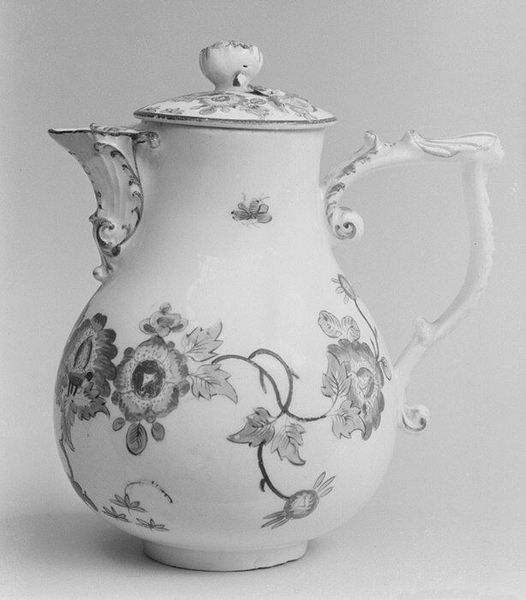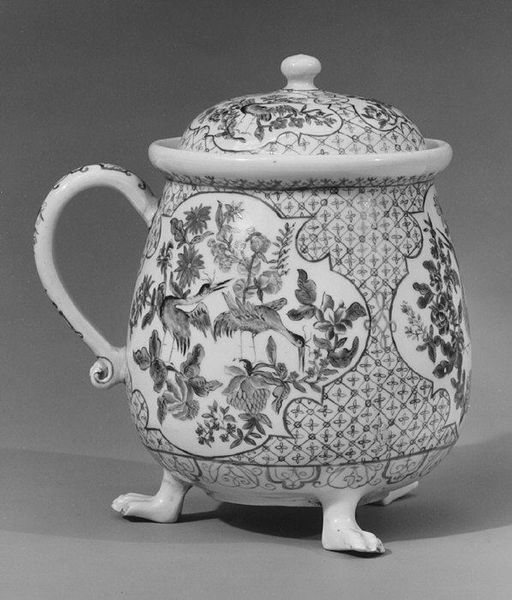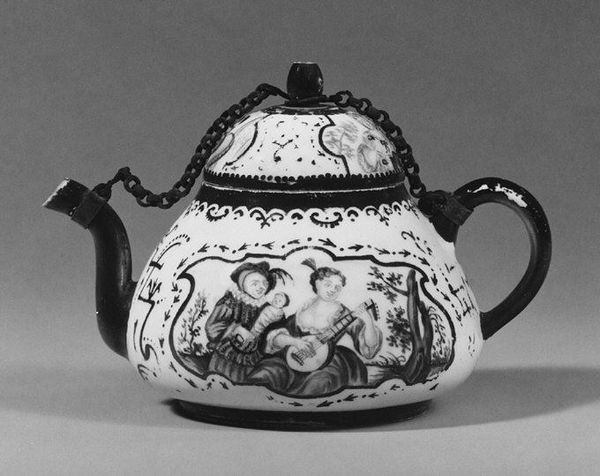
ceramic, porcelain, sculpture
#
baroque
#
ceramic
#
porcelain
#
geometric
#
sculpture
#
decorative-art
Dimensions: Height: 5 1/4 in. (13.3 cm)
Copyright: Public Domain
Curator: Looking at this intricate object, I’m reminded of ornate gardens, of elaborate pastries, of powdered wigs and gossip swirling over steaming cups of... well, whatever this held! It has an almost architectural solidity that strikes me. Editor: Indeed! We're looking at a cream jug from a larger service, dating from 1735 to 1745. Its creator was Cornelis Pronk, who had a keen eye for fashionable designs and understood the allure of chinoiserie. Curator: Chinoiserie, definitely! It's like Europe's beautiful, slightly bewildered dream of the Orient, isn’t it? The cross-hatched design with fan-like figures… So, not truly “Eastern,” but definitely *evoking* something exotic for its European audience. What were they *really* thinking? Editor: Exactly, the fashion was potent enough to influence courtly customs! Its visual language would have offered status, sophistication, and worldliness to the aristocratic clientele who used this porcelain daily. Made to impress, really! The Baroque flourishes alongside hints of Chinese motifs… a complex interplay. Curator: So, this wasn’t just about serving cream, right? It was a tiny performance on the table. Imagine, a gleaming porcelain stage, the subtle clinking as cream is poured – all part of curating an experience, not just having afternoon tea. How amazing! The jug is as sculptural, isn't it? As thoughtfully shaped as any statuette on display. Editor: The social and political aspects of pieces like this cannot be ignored. These ornate items broadcast the prosperity and connections of its owners – it signified their place within the aristocratic network. This little creamer did important work, beyond mere functionality! Curator: That kind of makes me question our impulse to preserve these items. Is it really about aesthetic beauty or, perhaps, inadvertently, we are eternalizing values which benefited so few at the expense of so many. Still it holds something for us to examine our own feelings. Editor: Perhaps. The enduring presence of objects such as these within the museum certainly spurs continued debate about such topics – that’s the joy of it. Thanks for this discussion. Curator: Indeed. And, thanks to you!
